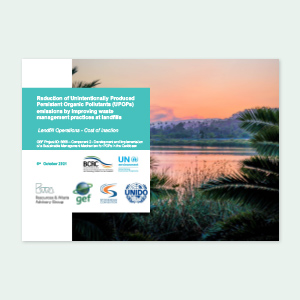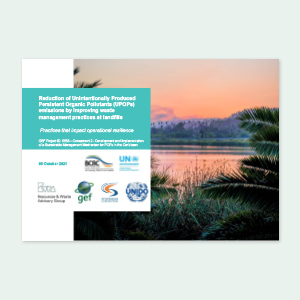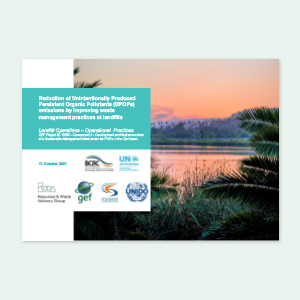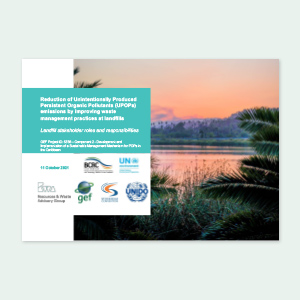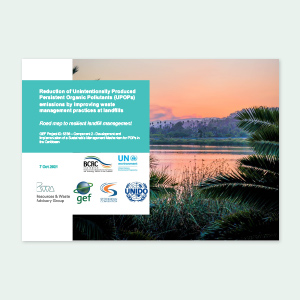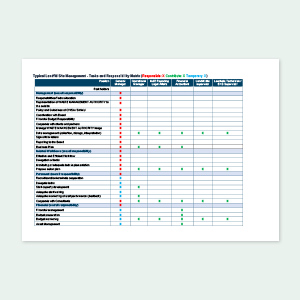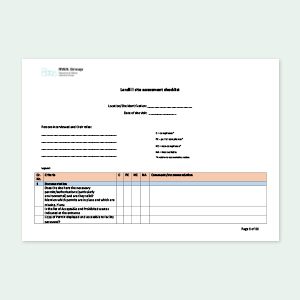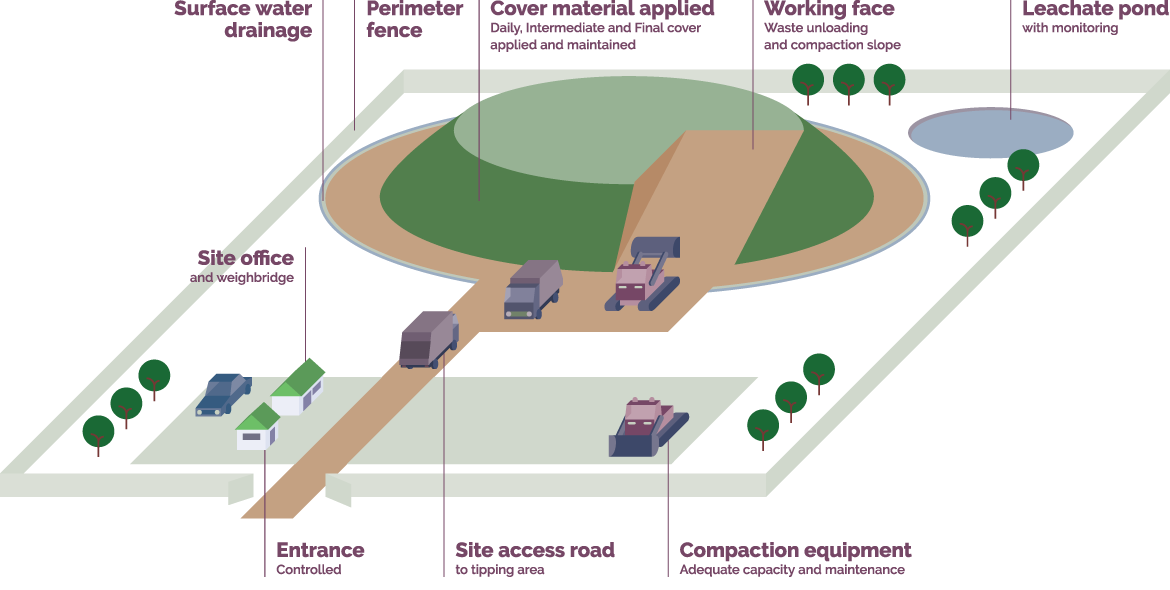
Components of a controlled landfill
Landfill Operations
Landfill Sites are an essential foundation of any integrated sustainable waste management system, but especially so in Small Island Developing States (SIDS) and throughout the Caribbean. They enable the safe and controlled disposal for residual wastes that cannot be managed by any other means. However, the disposal of waste to landfill sites must be closely controlled and monitored to prevent them from polluting air, land, or water and causing human, animal, or other harm, as well as prevent them from filling too quickly since SIDS are short of land for the development of new sites due to their small sizes. Managing these sites requires planning, financing, and skilled engineering particularly during the operational phase, but also during initial construction and site closure.
It is important to remember, that landfill sites are not magic boxes into which anything can be thrown and it will disappear never to be seen again. What goes in, will ultimately affect what comes out, either in gaseous or liquid state. If the site is not properly managed, a fire at the site would result in smoke, which would impact local, national and international communities.
Landfill fires and fires in waste stockpiles located at landfill sites, such as tyres and bulky wastes, are the most significant source of Unintentional Persistent Organic Pollutants (UPOPs) from the waste sector in the Caribbean. Such fires are all too common. The trigger factors for these fires are often down to operational issues, however the cause and root causes of these operational failures are often down to lack of financial resources, policy framework, and lack of segregation of waste streams partly due to waste generator behaviour. These root causes require to be addressed at the national level to ensure operational security and resilience of waste management services within the Caribbean countries and protect against, reduce the likelihood of occurrence, prepare for, respond to, and recover from disruptive events such as landfill fires.
The following presentations illustrate the impact of poor landfill management followed by methods to improve both operational practices as well as the overall operational resilience starting with identifying root causes and vulnerabilities so as to address them.
Landfill Operations – Road map to resilient landfill management
A major factor in successful landfill operations, is to ensure that roles and responsibilities are assigned to stakeholders who are held accountable for delivering them. A useful guide to allocating such at the landfill operational level is provided here
Landfill Operations – Typical Landfill Site Management Task Matrix
Often it can be unclear where weaknesses or short comings in operations are. In such cases the operator and regulator require to conduct periodic checks of the site and its operations. This check list provides the means to assess the landfill against international best practice
Videos
Introduction to working face operations
Example of inefficient working face operations
Example of efficient working face operations
The UN Habitat Wastewise Cities Tool
A further useful resource for benchmarking landfill operations is the UN Habitat Wastewise Cities Tool, which includes a step-by-step guide to assess a city or small island’s Municipal Solid Waste Management performance through the Sustainable Development Goals (SDG) indicator 11.6.1 Monitoring. This includes a Landfill Control Levels Assessment Tool which quickly and easily enables benchmarking of landfill performance against the SDG indicator.
UN Habitat Wastewise Cities Tool (WaCT) Portal https://unh.rwm.global
When operating the landfill, the biggest weakness identified throughout the Caribbean was in lack of appropriate landfill compaction machines (many being undersized for the volume and or type of waste being received), and / or inappropriate or inefficient use of the machines that are available. The following short videos highlight the weaknesses observed as well as highlighting good practice to be observed by operators.
Funded by
Global Environment Facility (GEF)

Implemented by
The United Nations Industrial
Development Organization (UNIDO)

Executed by
The Basel Convention Regional Centre for Training and Technology
Transfer for the Caribbean (BCRC-Caribbean)


